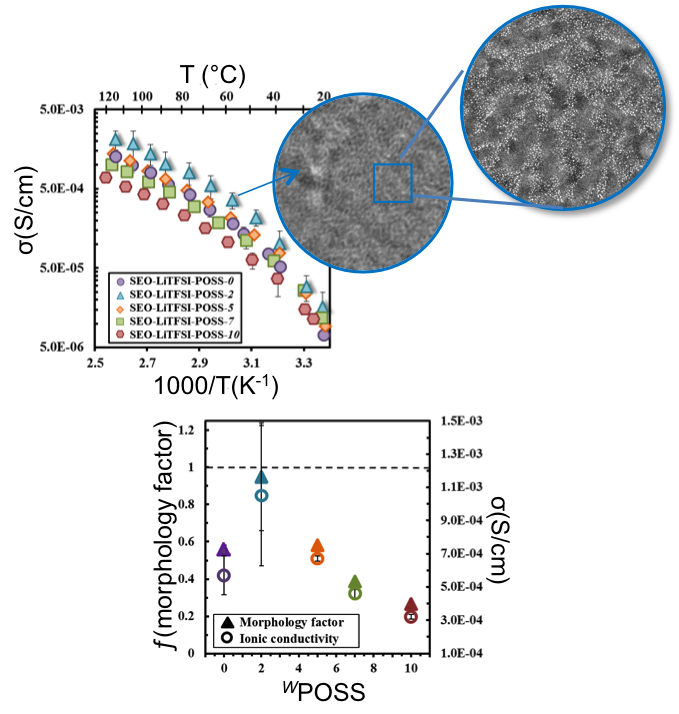
(Bottom) The value of morphology factor, f, for SEO-LiTFSI-POSS-2 is close to unity, the value expected for an idealized bicontinuous phase.
Scientific Achievement
- The ionic conductivity of nanostructured SEO block copolymer electrolytes is closely related to the morphology by this eq.:

- By the addition of nanoparticles, the morphology can be controlled, and thus the ionic conductivity of block copolymer electrolytes.
Significance and Impact
The addition of surface-modified silsesquioxane nanoparticles to an SEO electrolyte at an optimized concentration results in a transformation from lamellae to a disordered bicontinuous morphology with an ionic conductivity close to the ideal.
Research Details
- The value of f for SEO-LiTFSI-POSS-0 is 0.55, close to the value expected for lamellar phases. In contrast, the value of f for SEO-LiTFSI-POSS-2 is 0.94 ± 0.28, close to unity, the value expected for an idealized bicontinuous phase.
- The conductivity of the optimized hybrid electrolytes is only 6 % lower than that of an ideal nanostructured electrolyte conducting pathways.
Work performed at Lawrence Berkeley National Laboratory (JCESR partner) by I. Villaluenga, X. C. Chen, D. Devaux, D. T. Hallinan and N. P. Balsara Macromolecules, 2015.
DOI: 10.1021/ma502234y

